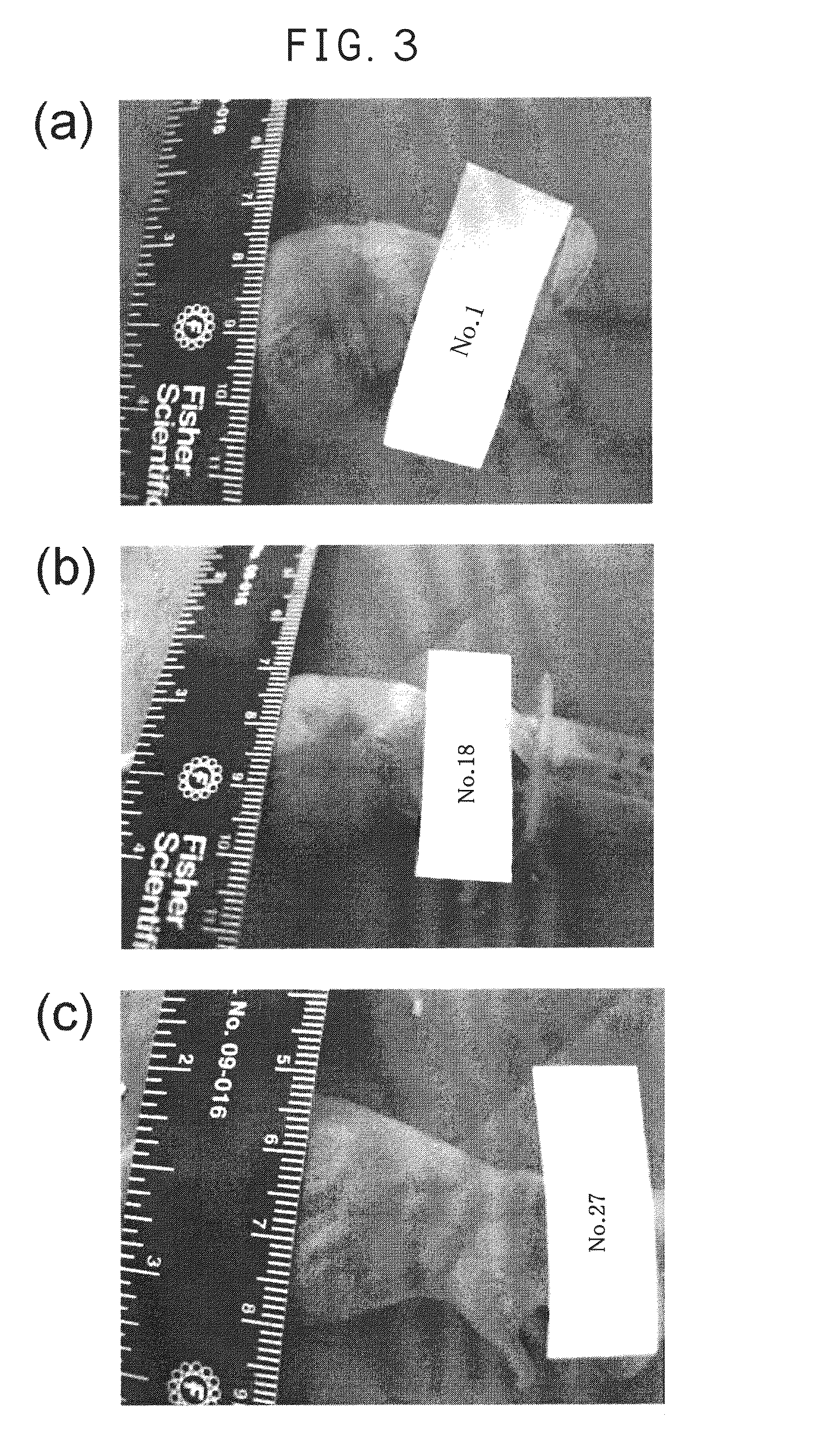Material for Wound Healing and Skin Reconstruction
a wound healing and skin technology, applied in the direction of prosthesis, drug composition, peptide/protein ingredients, etc., can solve the problems of inability to promote infiltration, limited use, and potential risk of infection, and achieve the effect of positive effect on wound healing and skin reconstruction
- Summary
- Abstract
- Description
- Claims
- Application Information
AI Technical Summary
Benefits of technology
Problems solved by technology
Method used
Image
Examples
example 1
(a) Creation of Skin Wound Models of Mice
[0052]30 NTaC:NIHS-Foxn1 type nude mice (female, weight ˜20 g) were used as experimental animals. The mice were housed in the condition of a temperature of 17 to 26° C., a relative humidity of 30 to 70%, a 12-hour light / dark cycle, minimum of ten fresh air changes / hour, and diet was provided once daily and the mice had access to water ad libitum.
[0053]Anesthesia was induced by placing the mice in a chamber filled with isoflurane at 2.5 to 4%, and maintained with isoflurane delivered through a nose cone at 0.5 to 2.5%.
[0054]All residual hair was removed from the upper right dorsum, and the operative area was cleaned with three alternating scrubs of povidone-iodine scrub and 70% alcohol. Once the alternating scrubs were complete, a final application of povidone-iodine scrub was applied and allowed to dry. The area was draped for aseptic surgery.
[0055]Forceps were used to pinch up a fold of skin (at what would become the lower right corner of t...
PUM
| Property | Measurement | Unit |
|---|---|---|
| diameter | aaaaa | aaaaa |
| area | aaaaa | aaaaa |
| amphiphilic | aaaaa | aaaaa |
Abstract
Description
Claims
Application Information
 Login to View More
Login to View More - Generate Ideas
- Intellectual Property
- Life Sciences
- Materials
- Tech Scout
- Unparalleled Data Quality
- Higher Quality Content
- 60% Fewer Hallucinations
Browse by: Latest US Patents, China's latest patents, Technical Efficacy Thesaurus, Application Domain, Technology Topic, Popular Technical Reports.
© 2025 PatSnap. All rights reserved.Legal|Privacy policy|Modern Slavery Act Transparency Statement|Sitemap|About US| Contact US: help@patsnap.com



